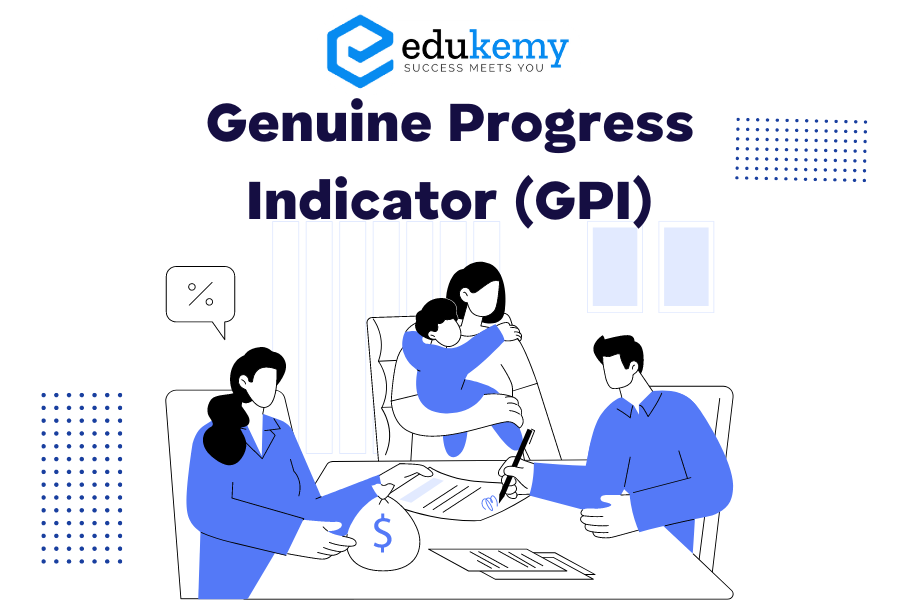
The Genuine Progress Indicator (GPI) is a metric developed by the think tank Redefining Progress in the United States. Unlike traditional economic indicators, the GPI aims to provide a more comprehensive assessment of national progress by considering environmental and social factors that are not captured by measures like GDP.
Contents
The GPI accounts for various aspects, including:
- Environmental Costs:
- This involves the deduction of the environmental impact of economic activities. It includes factors like biodiversity loss, resource depletion, pollution, loss of farmland and wetlands, and ozone depletion.
- Social Costs:
- The GPI also considers social factors such as increases in crime rates and family breakdown, which have an impact on the overall well-being of a society.
The GPI provides a more holistic perspective on the well-being of a nation, looking beyond the economic dimension to include environmental and social aspects.
As an example, it’s worth noting that Indian children of school-going age can now expect to stay in school for approximately 4.7 years longer compared to the situation in 1990. Additionally, India’s per capita income has seen a substantial increase of 266.6 percent between 1990 and 2017.
It’s important to acknowledge that despite these positive indicators, around 26.8 percent of India’s Human Development Index (HDI) value is lost due to existing inequalities within the country. This underscores the significance of addressing social disparities in the pursuit of genuine progress and well-being for all citizens.
Social Progress Index (SPI)
The Social Progress Index (SPI) is a comprehensive metric that evaluates a nation’s progress based on a blend of social and environmental factors, going beyond economic considerations. Similar in spirit to the Genuine Progress Indicator (GPI), the SPI provides a nuanced assessment of societal well-being and development.
Published by the non-profit organization Social Progress Imperative, this index draws heavily on the influential contributions of economists Amartya Sen and Joseph Stiglitz. The SPI comprises three fundamental dimensions:
- Basic Human Needs:
- This dimension centers on vital elements like health, sanitation, and personal safety. It assesses how well a society addresses the fundamental prerequisites for human well-being.
- Foundations of Well-being:
- This dimension focuses on factors such as ecosystem sustainability, shelter, and access to knowledge. It evaluates the underlying conditions that contribute to overall well-being.
- Opportunity:
- Opportunity encompasses personal rights, tolerance, inclusion, and various other aspects contributing to social and economic mobility and empowerment.
Within these three overarching dimensions, a range of specific indicators are considered. These indicators span various areas including health, safety, environmental sustainability, knowledge accessibility, and societal inclusivity.
By incorporating social and environmental factors alongside economic indicators, the Social Progress Index offers a more holistic view of a society’s advancement. This multi-dimensional approach provides a nuanced understanding of the overall well-being and progress of a community or nation.
FAQs
1. What is the Genuine Progress Indicator (GPI)?
A: The Genuine Progress Indicator (GPI) is an alternative metric to Gross Domestic Product (GDP) that measures the economic progress of a country while considering environmental and social factors. It aims to provide a more comprehensive understanding of societal well-being beyond purely economic measures.
2. How is the GPI calculated?
A: The GPI combines various economic, environmental, and social indicators to assess overall well-being. It accounts for factors like income distribution, environmental degradation, volunteer work, and the value of household labor, among others. The formula adjusts GDP by adding positive contributions (e.g., volunteer work) and subtracting negative factors (e.g., pollution and crime).
3. What are the advantages of using the GPI over GDP?
A: Unlike GDP, which primarily measures economic output, the GPI offers a more holistic view of societal progress. It considers factors such as income distribution, environmental sustainability, and social welfare, providing policymakers with a more comprehensive understanding of the overall well-being of a society.
4. What are some limitations of the GPI?
A: One limitation of the GPI is its reliance on subjective valuations for certain non-market goods and services, which can introduce bias and inaccuracies into the calculation. Additionally, data availability and quality may vary across different regions, making comparisons challenging. Despite these limitations, the GPI remains a valuable tool for measuring holistic progress.
5. How is the GPI being used in policy and decision-making?
A: The GPI has gained attention from policymakers and researchers seeking alternative measures of progress beyond GDP. Some regions and countries have incorporated GPI assessments into their policy frameworks to inform decision-making processes. By considering a broader range of factors, policymakers can develop more sustainable and inclusive policies that prioritize societal well-being over mere economic growth.
In case you still have your doubts, contact us on 9811333901.
For UPSC Prelims Resources, Click here
For Daily Updates and Study Material:
Join our Telegram Channel – Edukemy for IAS
- 1. Learn through Videos – here
- 2. Be Exam Ready by Practicing Daily MCQs – here
- 3. Daily Newsletter – Get all your Current Affairs Covered – here
- 4. Mains Answer Writing Practice – here

